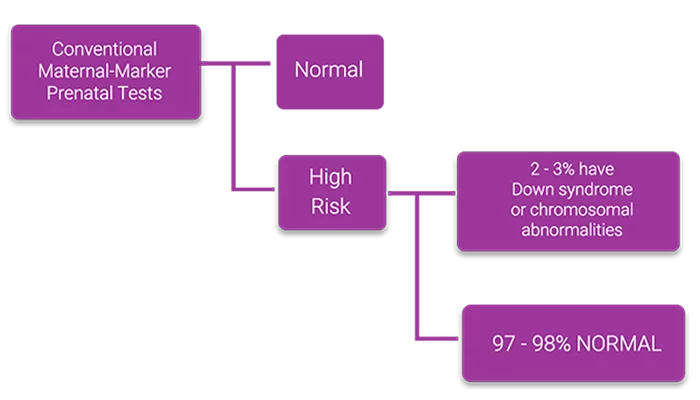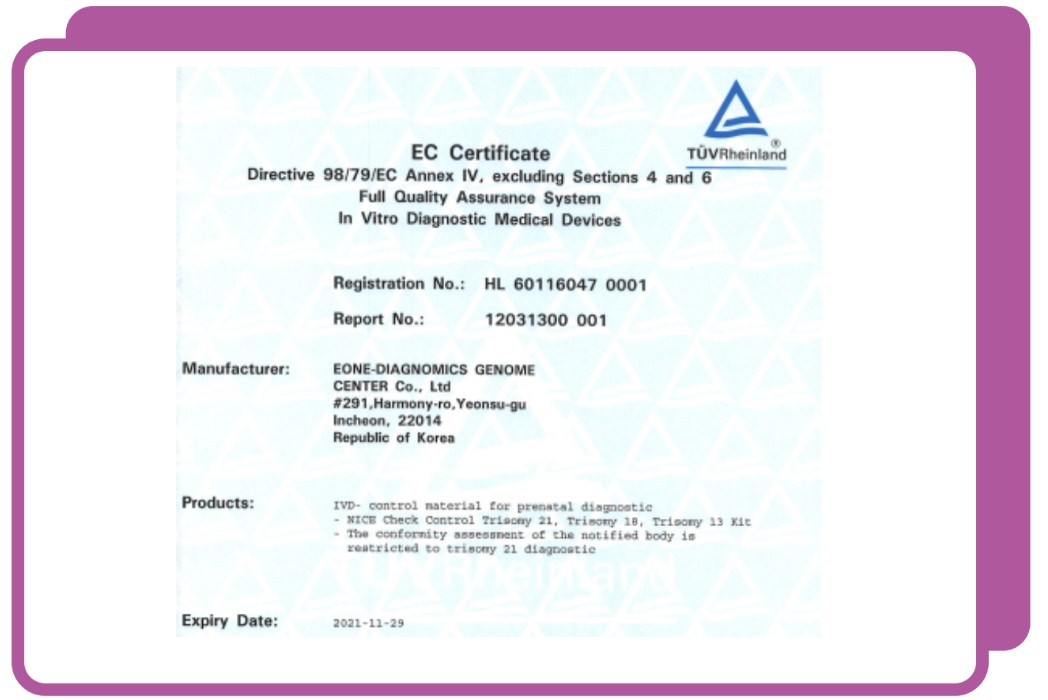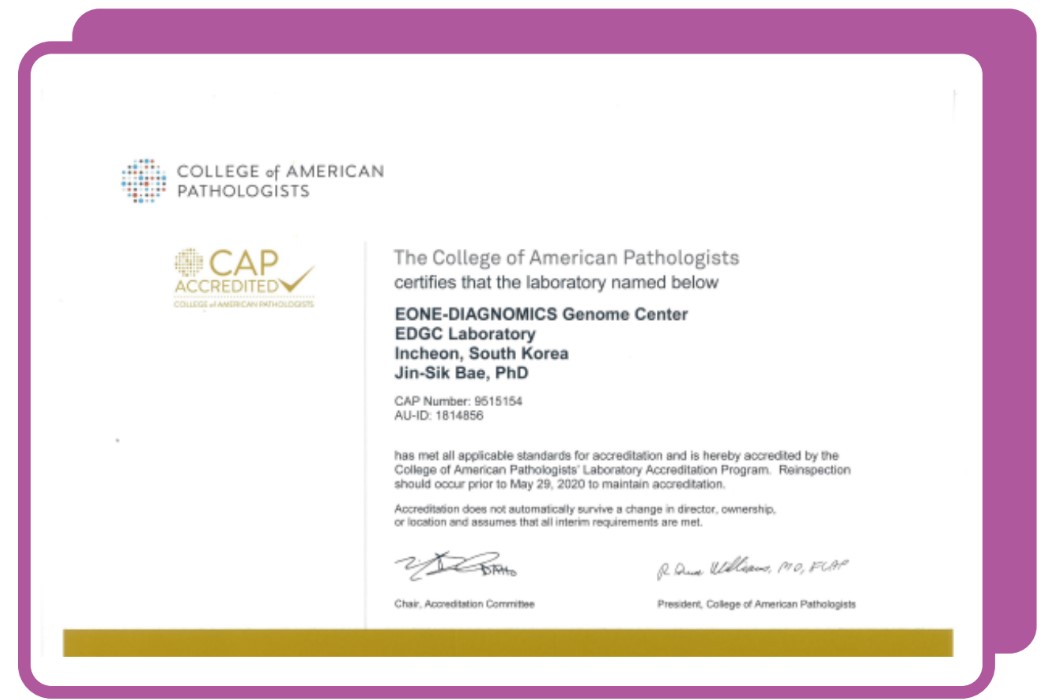
NICE® gives you an accurate insight into your pregnancy
From a simple blood draw as early as 10 weeks into your pregnancy, NICE® screens for the most common chromosomal abnormalities that can affect your developing baby’s future. This test is done with little or no risk to your pregnancy.
- A simple blood test to screen for chromosomal abnormalities of the developing baby. Carries little or no risk to your pregnancy.
- Can be performed as early as on the 10th week of pregnancy. Twin pregnancy can be tested.
- Employs Whole Genome Sequencing method for comprehensive coverage of all chromosomes.
- More than 99% accuracy rate.
- Option to know your baby’s fetal sex.
- Tested by internationally certified laboratory in South Korea.
- 3 panels available to detect up to 142 conditions. Option to know your baby’s gender.
- Up to US$300 confirmatory testing subsidy for patients detected with high-risk of chromosomal abnormalities.
Conventional Prenatal Tests vs NICE® NIPT
Conventional maternal marker-based prenatal tests such as triple tests, quad tests and integrated tests carry a high false positive rate of 5% or more. This means that of those who were diagnosed as high-risk through these tests, only 2 to 3 percent of them actually have Down syndrome. The rest of the group are perfectly normal but were misdiagnosed as part of the high risk group.

More accurate test reduce need for unnecessary invasive prenatal test
As high risk group patients are usually required to go through risky invasive test such as amniotic fluid test for confirmation, which exposes them to the risk of side effects including miscarriage, choosing a more reliable and accurate test will spare expectant mothers from unnecessary agony and anxiety. The table below compares the various prenatal tests available in the market today.
| NICE® | CONVENTIONAL SERUM TESTS | CONFIRMATORY TESTS | |
| Detection Rate (T21) | >99% | 80% – 95% | 99.99% |
| False Positive Rate (T21) | 1.49% | 3-5% | less than 1% |
| Possible risk | No (non-invasive) | No (non-invasive) | Yes (invasive) |
| Specimen | 10ml of blood | 5ml of blood | Amniotic fluid or chorionic cells |
| Test period | As early as 10 weeks | 10- 22 weeks | 10 – 20 weeks |
| Test method | Next generation sequencing | Serum biochemical markers | Cultivation using amniotic fluid or chorionic cells |
| Turnaround time | 7-10 working days | 4 – 5 weeks | 2 – 3 weeks |
Source
- Practice Bulletin No. 163: Screening for Fetal Aneuploidy; American college of Obstetrics & Gynaecologists. 127(5):e123–e137, May 2016.
- Kim MJ, Chang HK, Kim DI, Hee SU, Park S, Kim JH, Bae JS, Lee MH, Lee MS. Validation of fetus aneuploidy in 221 Korean clinical samples using non-invasive chromosome examination; J Genet Med 2015;12(2):79-84, May 2015.
- Non-Invasive Prenatal Testing (NIPT) Factsheet; National Coalition for Health Professional education in Genetics, 21 November 2012.
Enrolling NICE® NIPT
NICE® NIPT must be prescribed by your obstetrician who will explain the details about NIPT to ensure the test is suitable for you.
NICE® Trusted Quality
Your blood sample will be examined by a partner laboratory in South Korea. This laboratory is recognized by many world-class standards bodies.




Disclaimer
No test is perfect. DNA test results do not provide a definitive genetic risk in all individuals. Cell-free DNA does not replace the accuracy and precision of prenatal diagnosis with CVS or amniocentesis. Patients with positive test result or an additional finding should be referred for genetic counselling and offered invasive prenatal diagnosis for confirmation of test results. A negative test result does not ensure an unaffected pregnancy. The absence of an additional finding does not indicate a negative result. While results of this testing is highly accurate, not all chromosomal abnormalities may be detected due to placental, maternal or fetal mosaicism, or other causes. The healthcare provider is responsible for the use of this information in the management of their patient.
NIPT is a screening, not a diagnostic test. Patients should opt for it only as an informed choice after appropriate pre-test counselling.
